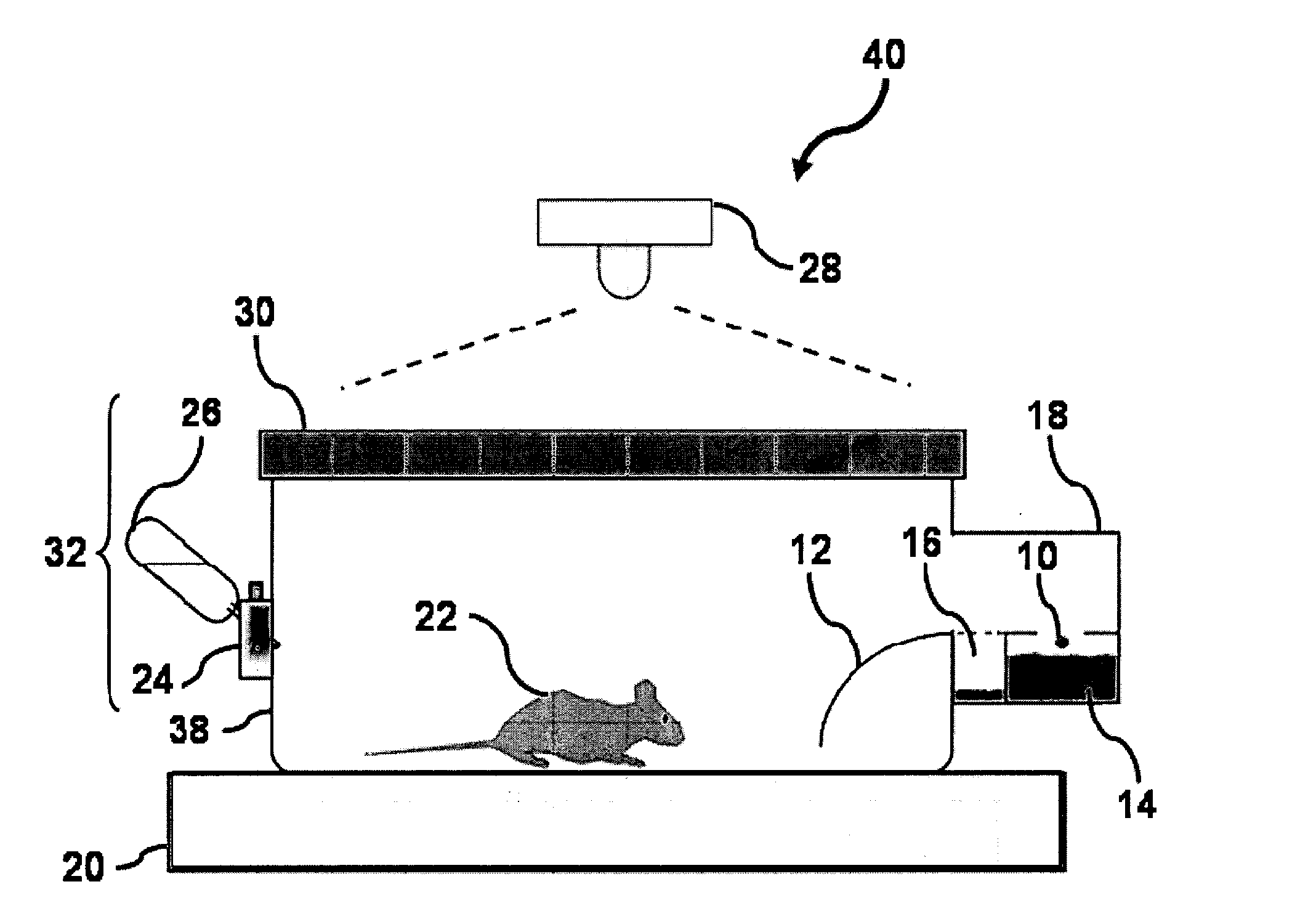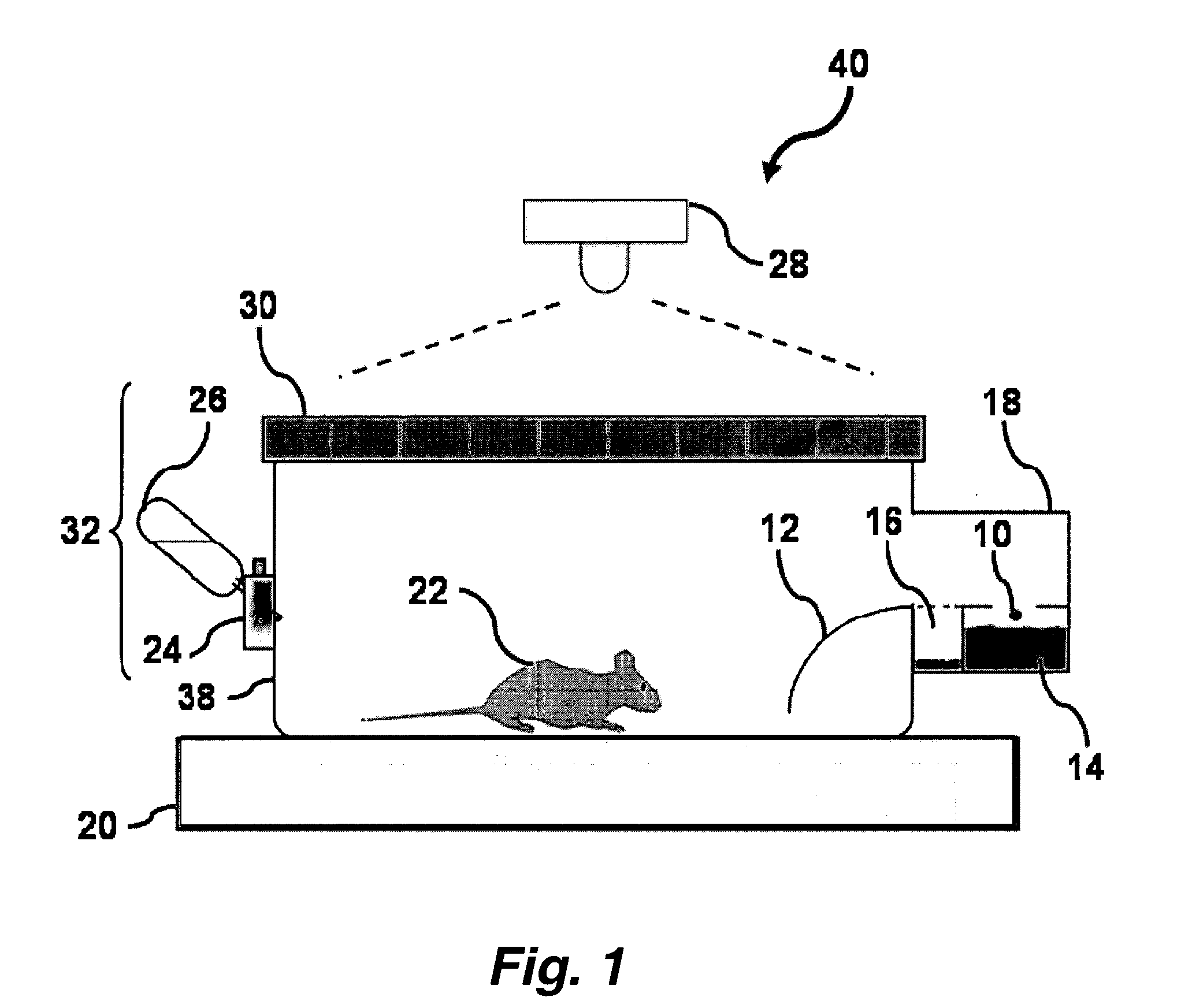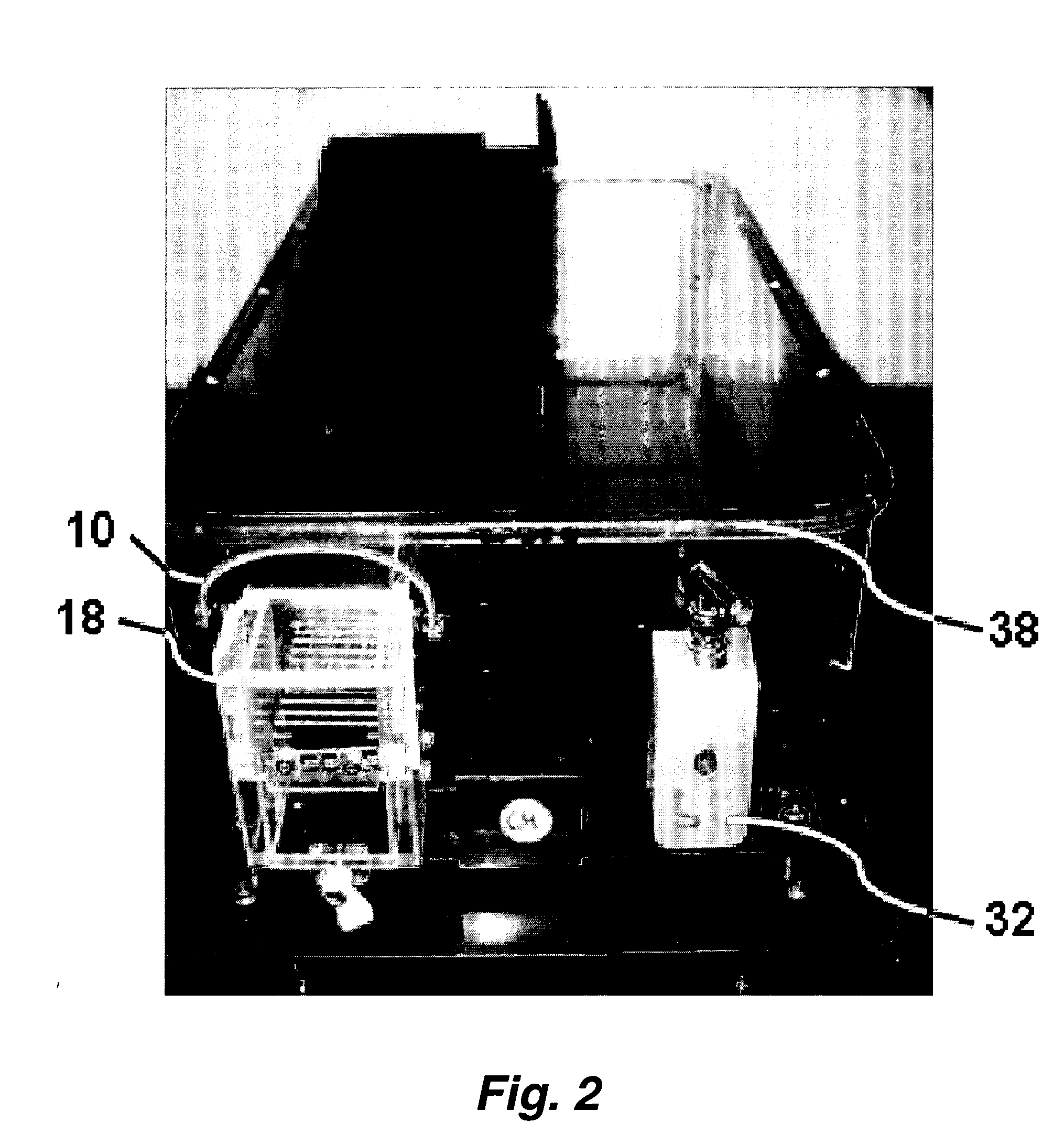Animal cage behavior system
a behavior system and cage technology, applied in the field of ethology and neurobiology, can solve the problems of confounding interpretation of behavioral data, repeated removal of mice from their home cages for a battery of behavioral, and substantial limitations currently exist in our ability to apply biotechnological advances to analyze neural substrates of complex mammalian behavior, etc., to achieve high temporal and spatial resolution, facilitate automated analysis and generation of behavioral fingerprints
- Summary
- Abstract
- Description
- Claims
- Application Information
AI Technical Summary
Benefits of technology
Problems solved by technology
Method used
Image
Examples
example 1
In certain embodiments, test animals (e.g. mice, rats, rabbits, guineae pigs, etc.) in cages equipped with a feeding monitor, a lickometer, and an activity detection platform (see, e.g., FIGS. 1 and 2). To determine food and fluid intake, feeding and licking coefficients (FC, LC) are calculated by dividing total consumption by the total photobeam break (PBB) time and lick contact duration (LCD). Multiplication of the FC by individual PBB times then yields the instantaneous food consumption while multiplication of the LC by LCD yields the instantaneous water consumption. We have validated this approach, observing tight correlations between measured intakes and PBB and LCD times.
This system has been used to characterize home cage behavioral patterns in C57BL / 6J, hyperphagic ob / ob (26) and 5-HT2CR null mutant mice (27, 28). Inspection of a record from a C57BL / 6J mouse reveals that feeding is episodic, closely associated with both water consumption and movement, and expressed in a di...
example 2
Introduction
The production of behavior by an animal does not occur randomly in time nor space, but is instead organized in the context of the environment to improve the fitness and thus the survival of the animal (Machlis (1997) Behaviour 63: 1-70). As a result of this organization, discernable and coherent patterns of behavior should be detectable, however the continual production of behavior by an animal in the natural or laboratory environment produces a vast amount of information. The challenge therefore is not only to develop the technology to obtain the behavioral data, but also to develop analytical techniques that reduce the information contained in this behavioral data to a succinct and informative summary. Because of the role of evolutionary selection in behavioral adaptation (Tinbergen (1963) 20: 89-94), there should be a substantial genetic contribution to the central nervous system structures that produce behavioral patterns. A detailed description and quantification...
PUM
 Login to View More
Login to View More Abstract
Description
Claims
Application Information
 Login to View More
Login to View More - R&D
- Intellectual Property
- Life Sciences
- Materials
- Tech Scout
- Unparalleled Data Quality
- Higher Quality Content
- 60% Fewer Hallucinations
Browse by: Latest US Patents, China's latest patents, Technical Efficacy Thesaurus, Application Domain, Technology Topic, Popular Technical Reports.
© 2025 PatSnap. All rights reserved.Legal|Privacy policy|Modern Slavery Act Transparency Statement|Sitemap|About US| Contact US: help@patsnap.com



